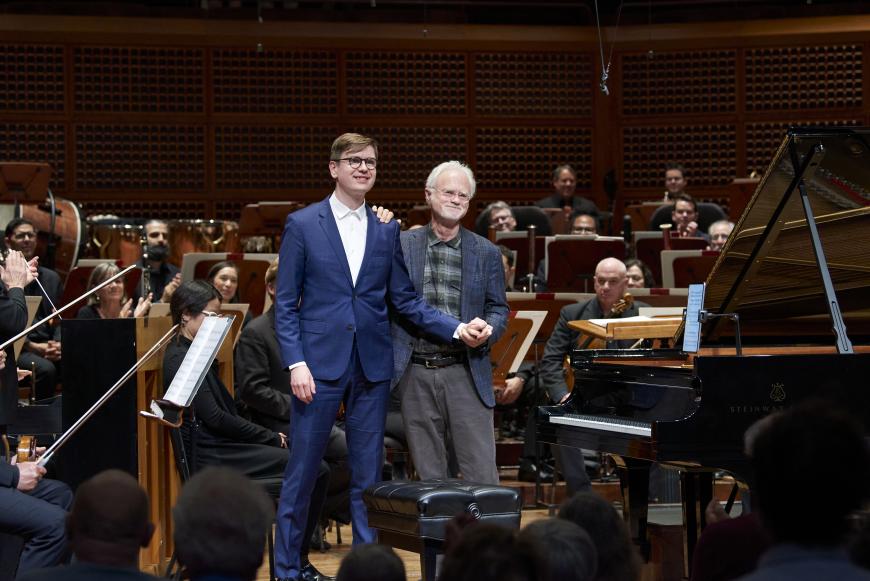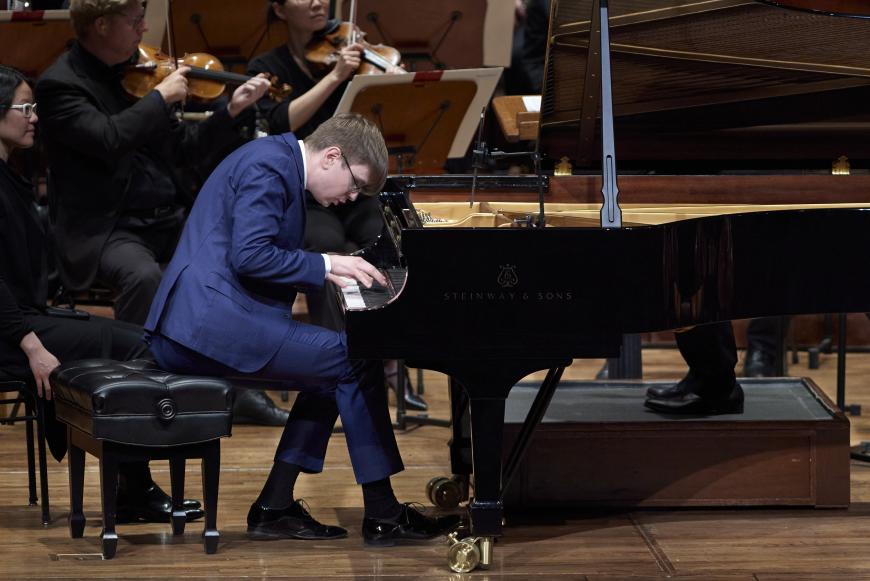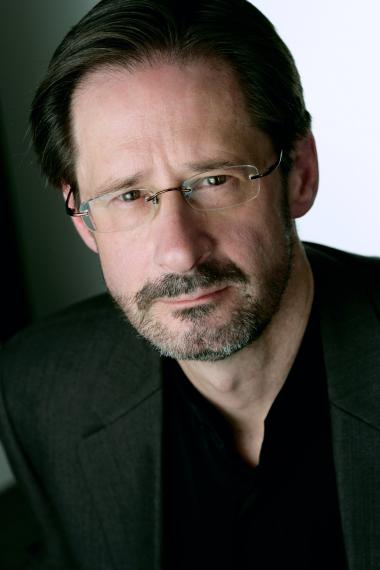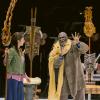
Composer John Adams has had an outsized influence on symphonic music in California. In the north, he served as new music adviser and composer-in-residence for the San Francisco Symphony. To the south, Adams is the creative chair for the Los Angeles Philharmonic. These have been exceptionally fruitful relationships: The two orchestras have, between them, commissioned around a dozen works from the composer.
His most recent large-scale work, the rollicking piano concerto Must the Devil Have All the Good Tunes? (2018), is an LA Phil commission. Adams first saw the sly title question in connection with the Catholic social activist Dorothy Day, but the phrase has a long history, going back as far as Martin Luther.
Must the Devil Have All the Good Tunes? rolled into town on Thursday, June 23 for its SFS premiere, where, conducted by music director Esa-Pekka Salonen, it proceeded to stomp all over Davies Symphony Hall, garnering a well-deserved standing ovation for Adams and pianist Víkingur Ólafsson. You’ll have to judge for yourself who exactly has the good tunes, but this fabulous concerto deserves to be heard widely and often.

Must the Devil Have All the Good Tunes? is a tightly constructed work, with three movements played in an unbroken span, and it comes with a few surprises. The first surprise is when the stage elevator rises up, carrying a Steinway grand, an amplifier, and an upright piano. The second piano is listed as a “honky-tonk piano” in the program, which in this performance meant a professionally detuned upright piano. (The score calls for a keyboard sampler, in case a detuned upright isn’t available.)
The upright, with Elizabeth Dorman at the keys, sometimes plays with the grand and, at other times, in counterpoint to it or with the orchestra. It’s hard to know the exact contributions of the upright piano because its sound doesn’t obviously come to the fore often; perhaps it’s adding to the overall effect more than anything.
The first movement is very much drawn from American vernacular music, which Adams has said was one of his goals for the concerto. Honky-tonkish from start to finish and called “Gritty, Funky, But in strict Tempo; Twitchy, Bot-Like,” it’s a pounding perpetual motion machine. So is the entire concerto, in which the pianist gets few breaks. Ólafsson, who, when standing, towered over everyone else on stage, played like a man possessed. By that, I mean with amazing concentration and force of personality.
Another of the concerto’s surprises is the astounding grace and subtlety of the movement transitions. In the transition to the second movement, one minute you think you’re in a roaring bar; a minute later you notice that somehow you have relocated to a quiet, darkened lounge. Here, the concerto becomes ruminative, the piano seeming to talk to itself over transparent strings. Instead of the pounding chords of the first movement, the piano plays quietly repeating figures that grow more complex, a sort of theme and variations.
The last movement, “Obsession / Swing”, starts out quietly, with repeated syncopated rhythms in the piano and orchestra that progressively get louder and louder. It’s rather like being in the path of an oncoming train with nowhere to go ... and then the music simply stops, seemingly mid-figure, with only a final chime lingering. For his encore, Ólafsson played Béla Bartók’s gentle Three Hungarian Folksongs From Csik with a delicate, lyrical touch a world away from the demands of the Adams.

The program opened with the SFS premiere of another LA Phil commission, the late Steven Stucky’s Radical Light, which premiered under Salonen during the 2007 “Sibelius Unbound” festival. Stucky was the resident composer at the LA Phil from 1988 to 2009 and composed a number of works for the ensemble during that period.
Radical Light, best described as a tone poem, is modeled after Jean Sibelius’s Seventh Symphony. In its brief 15 minutes, Radical Light traverses continents of contrasting music. A measured, slow opening, with rippling winds, leads to a section of primordial power, the horns and a trumpet seemingly emerging from oceanic depths. Divided upper strings contrast with rising scalar figures in the winds. Repeated figurations make a sonic connection to Must the Devil Have All the Good Tunes? The orchestra gathers speed and force, leading to perhaps the most mysteriously beautiful part of the work, in which the harp plays a slow descending scale over transparent string figurations. The brass play fanfares, and Radical Light ends with a Stravinskian percussion strike, another sonic link to the Adams.
Salonen closed the program with a performance, both majestic and tender, of Sibelius’s Fifth Symphony. Even across the intermission break, you could hear what Sibelius and Radical Light have in common, starting with the opening horn and wind figurations of the Fifth Symphony’s first movement and continuing through the kinds of orchestral contrasts in both works. The orchestra played magnificently throughout, perhaps most notably in the gorgeous soft passages of the Fifth’s last movement. For a conductor who said in 2007 that he had come to Sibelius late, resisting his influence on Finnish music, Salonen is now a master interpreter.




